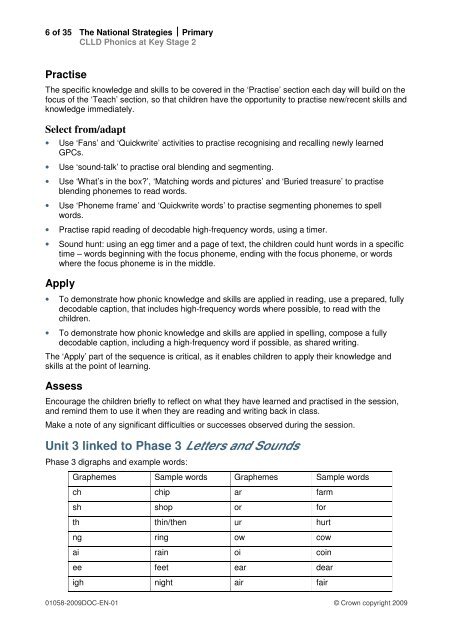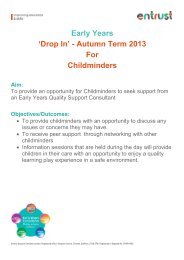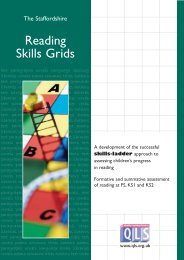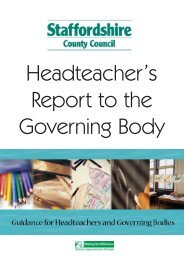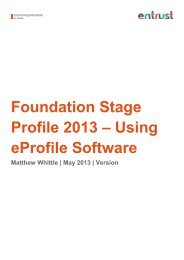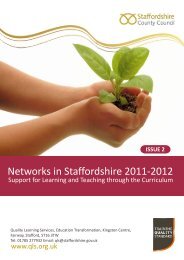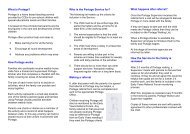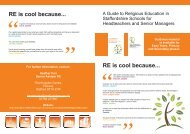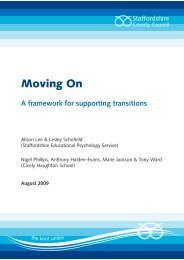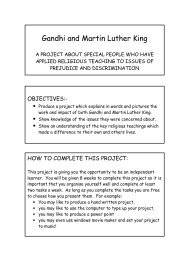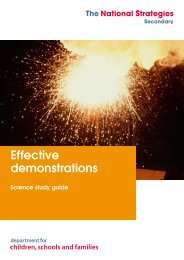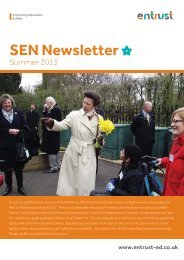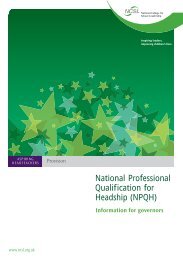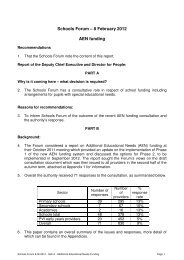CLLD Phonics at Key Stage 2 - School-Portal.co.uk
CLLD Phonics at Key Stage 2 - School-Portal.co.uk
CLLD Phonics at Key Stage 2 - School-Portal.co.uk
Create successful ePaper yourself
Turn your PDF publications into a flip-book with our unique Google optimized e-Paper software.
6 of 35 The N<strong>at</strong>ional Str<strong>at</strong>egies ⏐ Primary<br />
<strong>CLLD</strong> <strong>Phonics</strong> <strong>at</strong> <strong>Key</strong> <strong>Stage</strong> 2<br />
Practise<br />
The specific knowledge and skills to be <strong>co</strong>vered in the ‘Practise’ section each day will build on the<br />
focus of the ‘Teach’ section, so th<strong>at</strong> children have the opportunity to practise new/recent skills and<br />
knowledge immedi<strong>at</strong>ely.<br />
Select from/adapt<br />
• Use ‘Fans’ and ‘Quickwrite’ activities to practise re<strong>co</strong>gnising and recalling newly learned<br />
GPCs.<br />
• Use ‘sound-talk’ to practise oral blending and segmenting.<br />
• Use ‘Wh<strong>at</strong>’s in the box?’, ‘M<strong>at</strong>ching words and pictures’ and ‘Buried treasure’ to practise<br />
blending phonemes to read words.<br />
• Use ‘Phoneme frame’ and ‘Quickwrite words’ to practise segmenting phonemes to spell<br />
words.<br />
• Practise rapid reading of de<strong>co</strong>dable high-frequency words, using a timer.<br />
• Sound hunt: using an egg timer and a page of text, the children <strong>co</strong>uld hunt words in a specific<br />
time – words beginning with the focus phoneme, ending with the focus phoneme, or words<br />
where the focus phoneme is in the middle.<br />
Apply<br />
• To demonstr<strong>at</strong>e how phonic knowledge and skills are applied in reading, use a prepared, fully<br />
de<strong>co</strong>dable caption, th<strong>at</strong> includes high-frequency words where possible, to read with the<br />
children.<br />
• To demonstr<strong>at</strong>e how phonic knowledge and skills are applied in spelling, <strong>co</strong>mpose a fully<br />
de<strong>co</strong>dable caption, including a high-frequency word if possible, as shared writing.<br />
The ‘Apply’ part of the sequence is critical, as it enables children to apply their knowledge and<br />
skills <strong>at</strong> the point of learning.<br />
Assess<br />
En<strong>co</strong>urage the children briefly to reflect on wh<strong>at</strong> they have learned and practised in the session,<br />
and remind them to use it when they are reading and writing back in class.<br />
Make a note of any significant difficulties or successes observed during the session.<br />
Unit 3 linked to Phase 3 Letters and Sounds<br />
Phase 3 digraphs and example words:<br />
Graphemes Sample words Graphemes Sample words<br />
ch chip ar farm<br />
sh shop or for<br />
th thin/then ur hurt<br />
ng ring ow <strong>co</strong>w<br />
ai rain oi <strong>co</strong>in<br />
ee feet ear dear<br />
igh night air fair<br />
01058-2009DOC-EN-01 © Crown <strong>co</strong>pyright 2009


